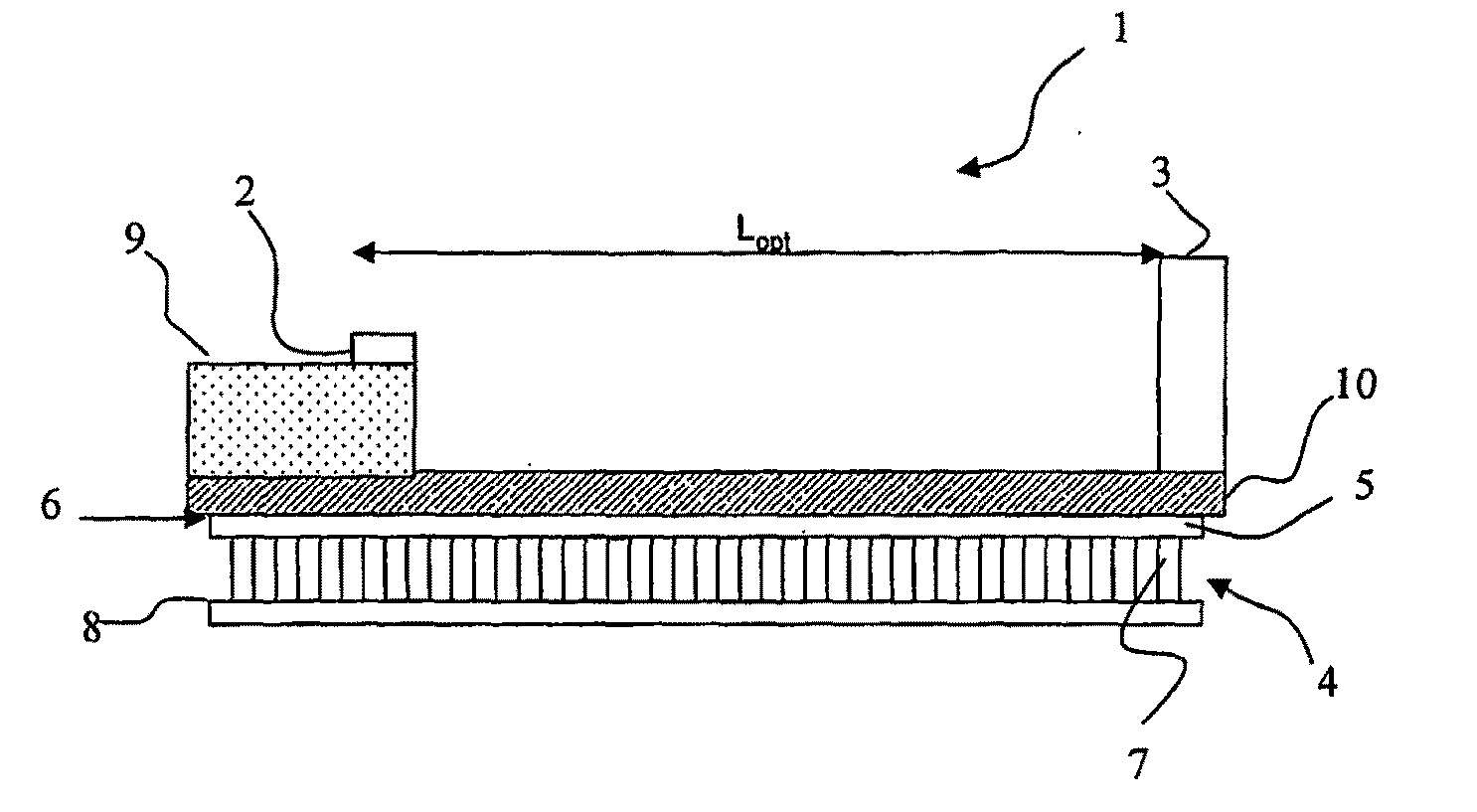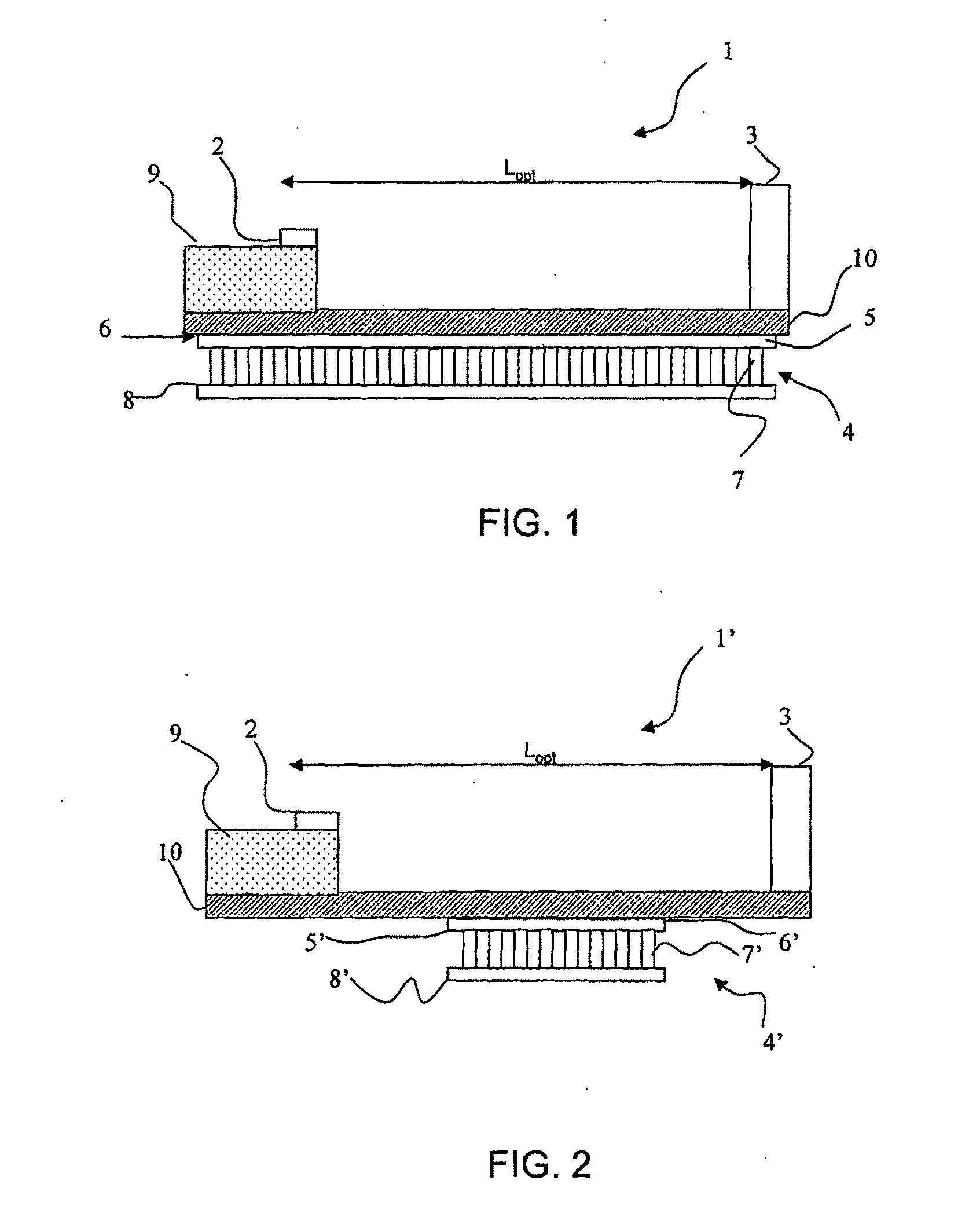Passive Phase Control in an External Cavity Laser
- Summary
- Abstract
- Description
- Claims
- Application Information
AI Technical Summary
Benefits of technology
Problems solved by technology
Method used
Image
Examples
Embodiment Construction
[0072]According to the preferred embodiments of the present invention, the external-cavity laser is a tuneable laser including a gain medium emitting a light beam, a grid generator and a channel selector, both grid generator and channel selector being located along the optical path of the beam exiting the gain medium. The grid generator selects periodic longitudinal modes of the cavity at intervals corresponding to the channel spacing and rejects neighbouring modes. The channel selector selects a channel within the wavelength grid and rejects other channels.
[0073]Preferably, the channel selector is a tuneable mirror, which forms an end mirror of the external cavity and defines it in length together with the reflecting front facet of the gain medium, e.g., a semiconductor laser diode. In other words, the tuneable mirror functions both as channel selector and as end mirror for the laser cavity.
[0074]The grid generator is preferably a Fabry-Perot (FP) etalon, which is structured and co...
PUM
 Login to View More
Login to View More Abstract
Description
Claims
Application Information
 Login to View More
Login to View More - R&D
- Intellectual Property
- Life Sciences
- Materials
- Tech Scout
- Unparalleled Data Quality
- Higher Quality Content
- 60% Fewer Hallucinations
Browse by: Latest US Patents, China's latest patents, Technical Efficacy Thesaurus, Application Domain, Technology Topic, Popular Technical Reports.
© 2025 PatSnap. All rights reserved.Legal|Privacy policy|Modern Slavery Act Transparency Statement|Sitemap|About US| Contact US: help@patsnap.com



